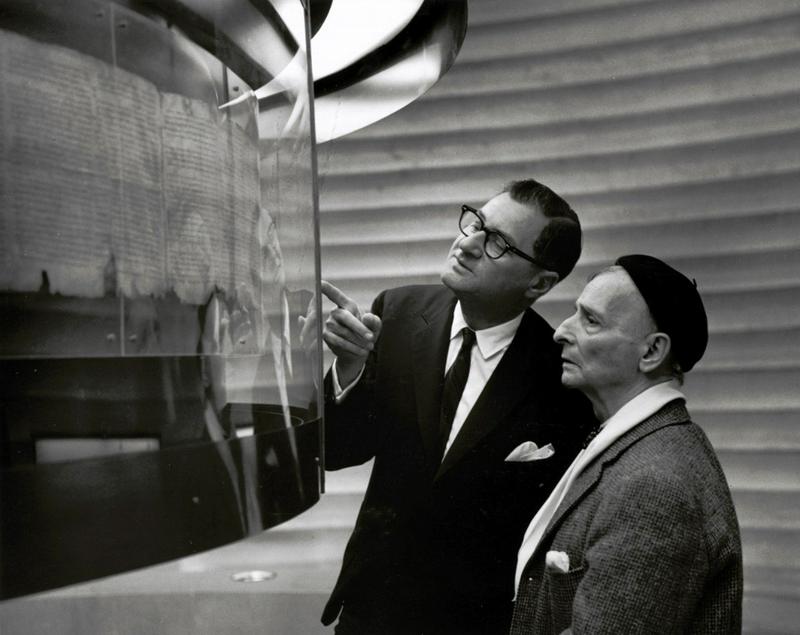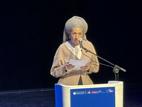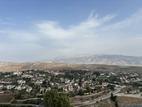In celebration of the 60th Anniversary of the Israel Museum, Jerusalem, the Great Isaiah Scroll will be displayed in its entirety – a once-in-a-lifetime opportunity to view the most complete manuscript of the Bible ever found.
Introduction
In December 2025, the Israel Museum, Jerusalem, will mark the 60th Anniversary of its opening with an exceedingly rare showing of the entire Great Isaiah Scroll, the most complete manuscript of the Bible among the Dead Sea Scrolls. For many of the expected tens of thousands of visitors who will come to view the Scroll, this may be the only chance to see it in their lifetime.
The discovery of the Dead Sea Scrolls, the world's oldest extant manuscripts of the Hebrew Bible, represents a turning point in the study of the history of the Jewish people in ancient times; never before has a literary and historical treasure of such magnitude come to light. These remarkable finds shed light on a formative period in human history, which greatly enriches our knowledge of Jewish society in the Land of Israel during the Hellenistic and Roman periods, as well as of the origins of rabbinical Judaism and early Christianity. They have therefore become a must-see on the itinerary of every visitor to the State of Israel.
The Dead Sea Scrolls were discovered between 1947 and 1956 in eleven caves near Khirbet Qumran, on the northwestern shores of the Dead Sea. Approximately 2,000 years old, they date from the second century BCE to the first century CE. The most outstanding of the Dead Sea Scrolls is undoubtedly the Great Isaiah Scroll. At 7.17 meters, the Great Isaiah Scroll is the longest and best preserved of all the biblical scrolls. Its 54 columns contain all 66 chapters of the Hebrew version of the biblical Book of Isaiah. Dating from ca. 125 BCE, it is also one of the oldest of the Dead Sea Scrolls, some one thousand years older than the oldest manuscripts of the Hebrew Bible known to us before the discovery of the Dead Sea Scrolls.
The Great Isaiah Scroll is housed in the Israel Museum's Shrine of the Book, which was built to house the first seven of the Dead Sea Scrolls. Designed by American architects Armand P. Bartos and Frederic J. Kiesler, it was dedicated in an impressive ceremony on April 20, 1965, one month ahead of the rest of the Museum. The year 2025 is therefore the 60th Anniversary of the Shrine of the Book as well as the opening of the Israel Museum – the ideal milestone to display the Great Isaiah Scroll and introduce it to our diverse audiences of all ages, religions, and backgrounds, both local and international.
Although the Great Isaiah Scroll is considered the jewel in the crown of the Shrine of the Book, only a small part of the original scroll is normally on display. This is due to conservation restrictions that were not in place while planning the Shrine in the 1960s. The Scroll was taken down for storage in 1968; since then, visitors can only view a facsimile of the full scroll at the center of the Shrine, and a small section of the actual scroll in a side vitrine. This exhibition will thus mark a once-in-a-lifetime opportunity to see the Scroll in its entirety. On this milestone occasion, the Great Isaiah Scroll will be centrally displayed in the Museum's Bella and Harry Wexner Gallery at the heart of the Museum, an exhibition space which is passed by virtually every visitor to the Museum.
Exhibition Structure
The exhibition will feature a new approach to the Scroll, examining it both as an archaeological artifact and as a unique historical creation. The viewing experience will encompass an exploration of the materials the Scroll is made from and the evidence of its use in ancient times, prior to its deposition in the cave. This comprehensive analysis will offer visitors a picture of the Scroll's production and its essence – the enduring and profound content it carries. Presented in such a way as to shed light on the Scroll for scholars, laymen, and visitors of all ages, backgrounds, and religions, the main goal of the exhibition will be to reach as many people as possible around the globe, both in person and online, encouraging a personal interaction with the Scroll.
The exhibition will take visitors on a unique personal journey, starting in the Judean Desert, under the dazzling sun, in front of the steep cliffs of Cave No. 1 on the north-western side of the Dead Sea, where the first seven scrolls were discovered. Entering the darkness of the cave, visitors will experience for themselves the incredible story of the discovery of the first seven scrolls, among them the Great Isaiah Scroll.
The journey will continue along the route that the Scroll followed, and the hands that it passed through, until its arrival in 1965 at the Shrine of the Book at the Israel Museum.
This personal journey for visitors will culminate in the chance to discover the entire Great Isaiah Scroll, more than seven meters in length, in all its glory, providing many with their first-ever encounter with this monumental manuscript.
In the following section of the exhibition, the focus will be on the findings of new research that has shed light on the use of the scroll in ancient times. The groundbreaking research leading up to the exhibition will reveal to the public secrets about the scroll's creation, its materials, and its function. These discoveries will offer an unprecedented look into how the scroll was utilized and preserved by the ancient community. In addition to exploring the physical and historical aspects of the Scroll, the exhibition will also highlight the significant value and meaning of the Scroll's written content. Visitors will have the chance to gain a deeper understanding of who the scribe was and the nature of the text itself, emphasizing its importance and impact. The exhibition will address and emphasize the Scroll's significance to both Judaism and Christianity, while encompassing well-known quotations and prophesies from the Book of Isaiah, many of which have become cornerstones of Judeo-Christian civilization, and part of everyday parlance.
Perhaps the most renowned of these is Isaiah's vision of universal peace at the End of Days: "And they shall beat their swords into plowshares and their spears into pruning hooks: Nation shall not take up sword against nation; neither shall they know war anymore." (2:4).













